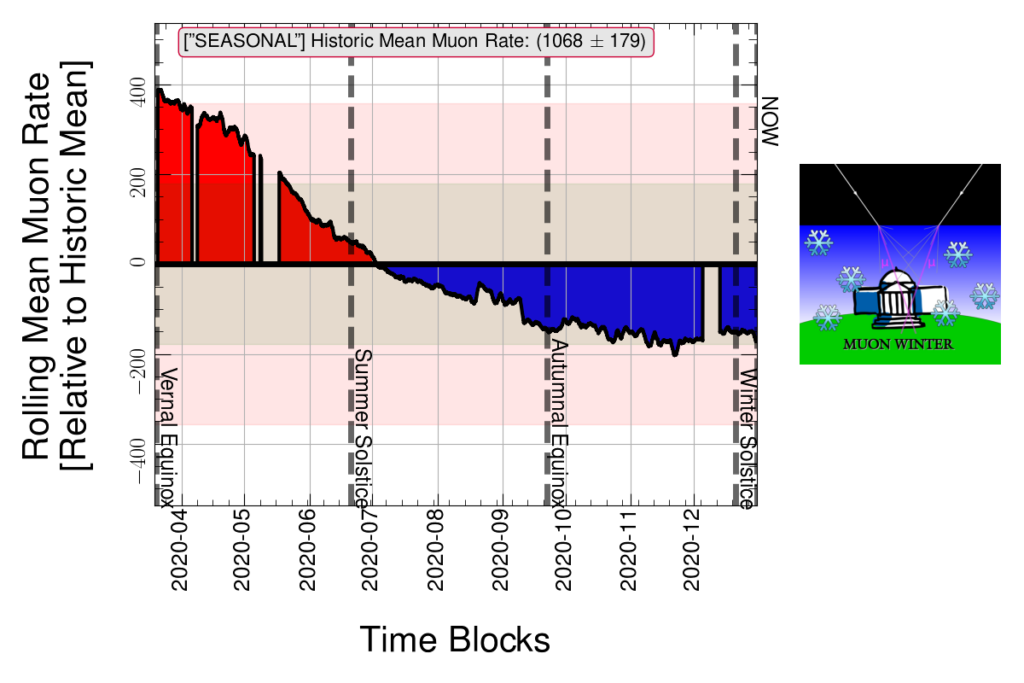Over the winter break, I have picked up my little muon detector data side project that started in the spring term of 2020. A few days ago, I remarked on how I wanted to take account of “weather” in the data – variations around a daily expectation given seasonal conditions – and “seasons” – long-term trends in the data.
Based on almost 290 days of data since I began this project, it was clear that the counts vary with time with short-period and long-period trends. Let us define a muon “timeblock” as a quarter-hour (15 minute) duration of data-taking. In a single timeblock, the detector typically reports the passage of about 1000 muons. What 290 days of data has taught me is what many previous experiments have also seen: there are overall fewer muons per timeblock in colder months and more in warmer months. So there is something of an annual overall trend, sinusoidal in shape, as well as shorter-term variations (hourly, daily, over multiple weeks, etc.).

I have now captured the seasonal effect using s sine function model. This is fitted to all previous days of data, excluding the current one, to find the best model parameters that describe the past. Today’s rate is then extrapolated from the function, including the effect of model parameter statistical uncertainty from the fitting process. This allows me to identify “weather” conditions – deviations from the daily expectations.
It is currently “winter-like” now. That means we expect, on average, the muon rate to be below the yearly average. Yesterday, we saw additionally “colder” muons weather, with quite a lull in muon counts given the expected rate in each timeblock. Today, things appear to be “heating” back to the expectation, and we will see where the day takes us.

You can find the current muon weather at SMU on my computational lab site, SA-SO (the SMU All-Scale Observatory, my name for my virtual laboratory space at SMU): https://blog.smu.edu/saso/projects/muon-observatory/#Muon_Weather_Conditions



